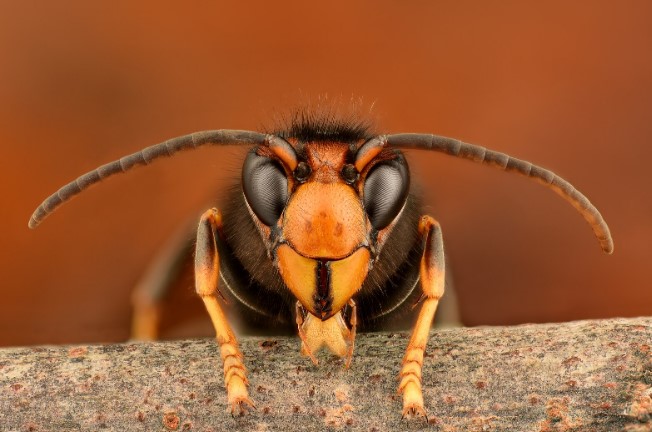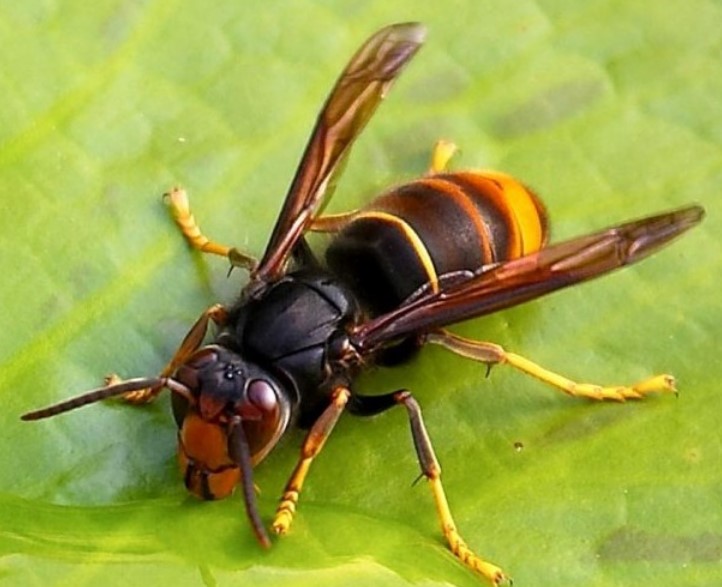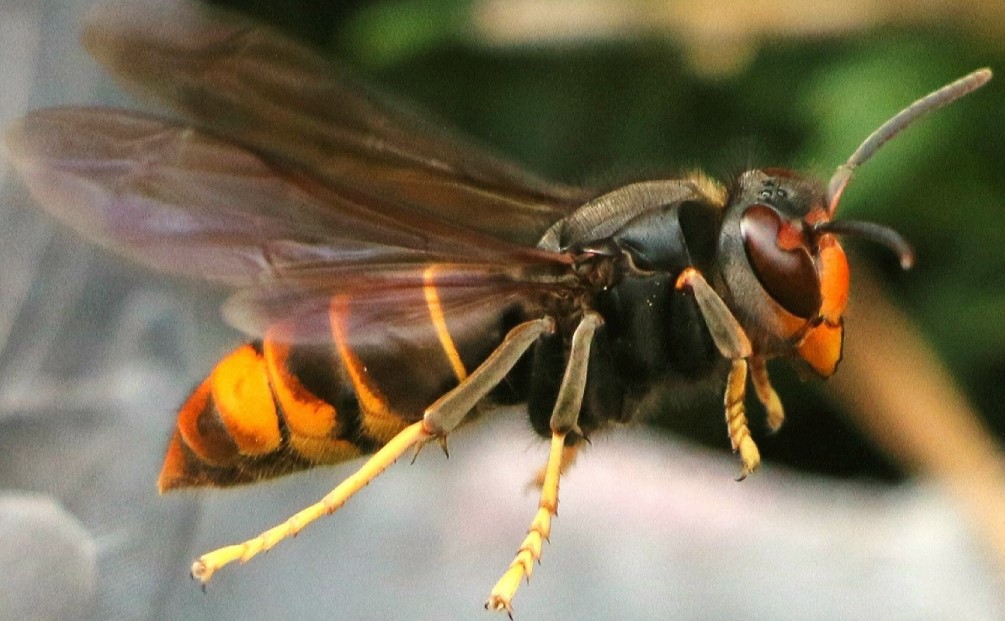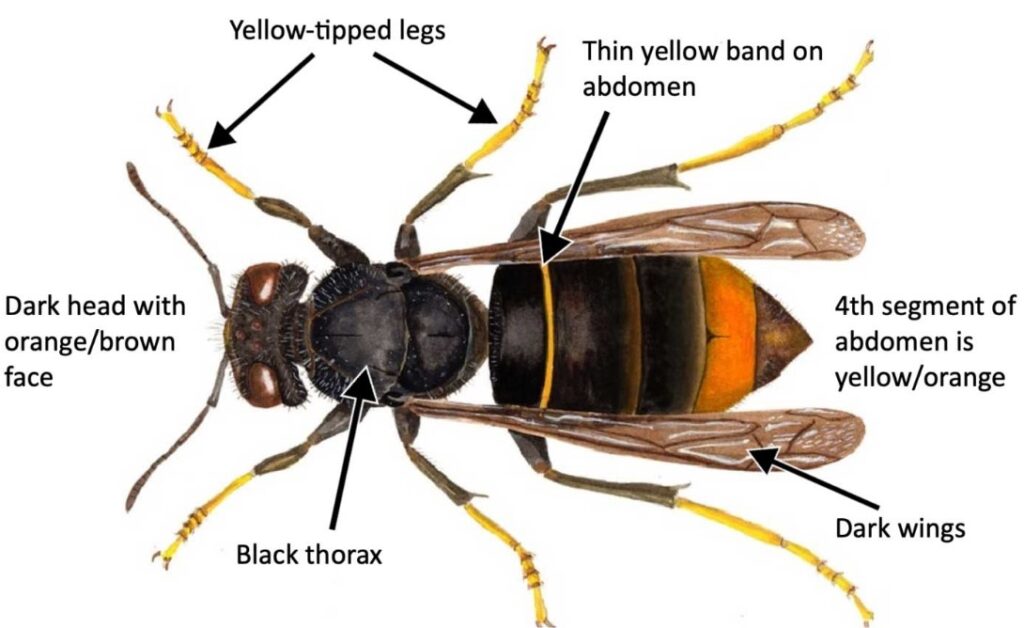
In a world full of threat and danger, it would be easy to bypass the current invasion of Asian hornets into the UK. Yet these predatory insects pose huge threats to pollinators, including honeybees. Without pollination, plants are unable to fruit or reproduce. The process is essential for life on our planet and since the first UK nest was found in 2016, sightings have increased each year.
As the name suggests, they originate in southeast Asia and were first spotted in France in 2004. They’ve been found in cargo for example a cauliflower in Bury (Manchester) and in another cauliflower delivered to a zoo in Northumberland. It’s also been suggested they can hitch rides on cross channel ferries.
Asian hornets are on the list of invasive non-native (alien) animals issued by the Department for Environment, Food & Rural Affairs. It’s important to know what one looks like so this post is about recognising an Asian hornet and what to do if you think you’ve seen one.

Recognising an Asian hornet
As well as the common European hornet, which is larger than the Asian hornet, the variety of bees and wasps in the UK is extensive. As these images demonstrate, many flying insects, including some species of horseflies and hoverflies, have striped abdomens. Being able to spot the difference is vital for the current invasion of Asian hornets to be managed.


Asian hornets have the following distinctive features:
- orange/yellow faces
- legs look like they’ve been dipped in yellow paint
- dark brown/black abdomens with the fourth segment being orange/yellow

I’ve seen dead Asian hornets where the colours have been black and orange rather than yellow and the additional yellow edges of each abdominal section are less clearly defined. When identifying an Asian hornet, I’d suggest starting with the yellow legs, followed by a dark abdomen with a clear band of orange/yellow towards the end.

What to do if you think you’ve seen an Asian hornet
There are many ways to report a suspected sighting. The UK Centre for Ecology and Hydrology have released an app called Asian Hornet Watch which can be downloaded for free for both Android and Apple devices.
Bee Base, from the National Bee Unit, suggest you try to capture or kill it to prevent it flying off. After capture, place it in the freezer or stand on it. Either way, take a photo and report it If it looks like an Asian hornet a Bee Inspector will contact you to arrange a visit. More details can be found here So you think you’ve seen an Asian Hornet?
If you don’t have the app, the UK Centre for Ecology and Hydrology have a non-native species online report form and there is also an email address – alertnonnative@ceh.ac.uk. A photograph is essential to ensure accurate identification.
Asian hornets do sting so take care. If you accidently get stung, take an antihistamime to help reduce any swelling and pain. Treating insect bites and stings
Additional sources of information
- Identifying hornets from the Wildlife Trust
- Asian Hornet Action Team
- BBC page on Asian Hornets
- Guardian article about Asian hornets
- British Beekeepers Association Asian hornet resources page
As a beekeeper, Asian hornets are high on my list of predators to watch out for. During the spring, from mid april onwards, Asian hornet queens are out and about scouting for nests. During the summer, from July onwards, the colony becomes established and from now until November they are on a permanent search for sources of protein and carbohydrate.
Colonies of honeybees are prime targets. Hives contain stores of honey while flying bees have large muscles to power their wings. The Asian horent will hover outside the hive, a process known as hawking, before swooping in to capture a bee. They dehead it and remove the legs before flying the thorax back to their nest for the developing larvae.
Each Asian hornet is capable of killing up to 50 honeybees in a day. In the height of the Asian hornet season, it would not take long for a colony to be weakened and ultimately destroyed.
Vigilance of behalf of beekeepers and the public is essential so I hope this post has been useful.
